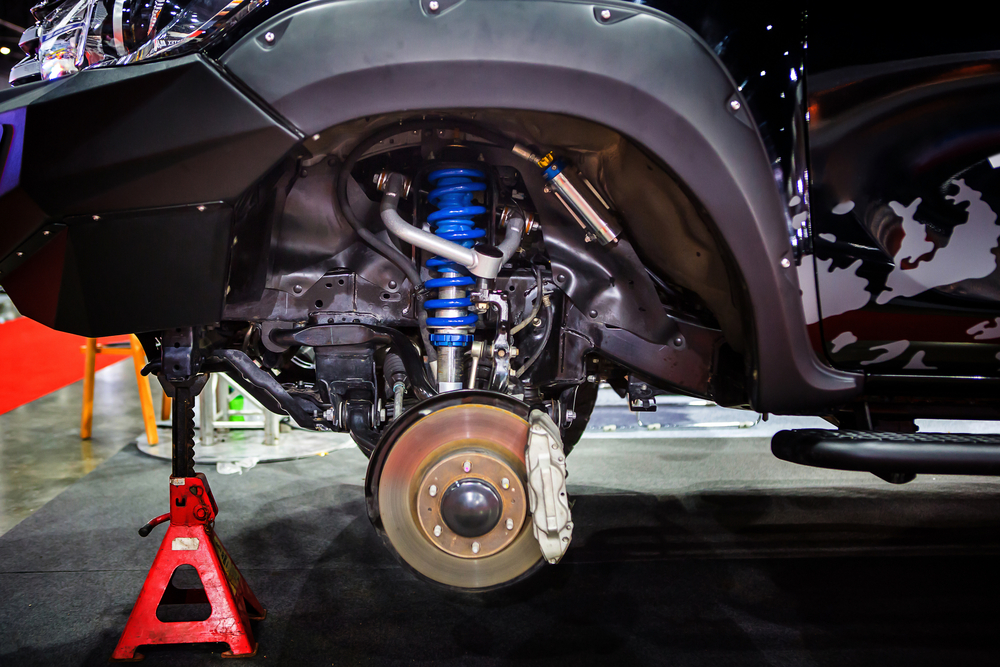As car enthusiasts at Kunes Auto Group, we often reflect on the essential systems in a vehicle. The engine, without a doubt, drives our journeys, while brakes are indispensable for our safety. But let's spotlight an unsung hero: the suspension system. When functioning well, it may go unnoticed, but it's vital for a smooth ride. We invite you to delve into the world of suspension—more specifically, the role of shocks and struts—for the ultimate driving experience.
Understanding Your Vehicle's Suspension System
Your vehicle moves not just forward and backward, or around curves and turns, but also up and down—especially on uneven surfaces, during acceleration, or abrupt braking. The suspension system's duty is to balance these movements, absorb and disperse energy from sudden shifts in weight distribution. It ensures your tires maintain steady, controlled contact with the road as you steer.
The Essential Role of Shocks and Struts
Unpredictable road conditions challenge your vehicle's suspension. Hitting a pothole or uneven patch causes your suspension's heavy-duty springs to absorb the sudden energy. But where does it go? Enter shock absorbers, colloquially known as "shocks" or "struts."
Each cylindrical shock or strut in your vehicle houses a piston system. This system dissipates the energy from roadway disruptions into your hydraulic suspension fluid, sparing your vehicle's structure the brunt of the impact.
Deciphering the Difference: Shocks vs. Struts
Shocks and struts both absorb shocks, but struts also serve a structural, weight-bearing function in your vehicle. Depending on your car type, you might have a mix of both within your suspension system. But recognizing when to replace shocks or struts, and understanding the repercussions of neglecting them, is key to maintaining your vehicle.
Identifying Worn Shocks and Struts
Identifying issues with your suspension system can be tricky. Here are the signs to look out for:
Altered Handling After Hitting a Pothole: Hitting a bump can affect your shocks and struts. Erratic steering or pulling is a red flag, warranting immediate repair.
Fluid Leaks Near Shocks or Struts: Leaks near these components could indicate a compromised housing or seal, given that they house hydraulic suspension fluid.
Increased Stopping Distance or "Nose-Diving": If your vehicle is taking longer to stop or is "diving" forward when you brake suddenly, your shocks or struts might need replacement.
"Squatting" During Sudden Acceleration: A lowering of your vehicle's rear during quick acceleration signals uneven weight and shock absorption in your shocks or struts.
Tipping or Swaying on Turns: If your vehicle seems to lean to one side during a turn or sharp curve, it may be time to replace your shocks and struts.
Risks of Ignoring Worn Struts
Ignoring worn-out shocks or struts not only compromises your comfort but also exposes your vehicle to risks such as uneven tire wear, extended stopping times, steering issues, and premature wear of suspension components.
When to Replace Shocks and Struts
Generally, shocks and struts should be inspected starting at 50,000 miles. However, your driving habits, road conditions, and vehicle type might necessitate adjustments. For manufacturer-specific guidance, refer to your car's scheduled maintenance manual or consult with professionals at Kunes Auto Group.
Spotting Bad Struts
If you suspect that your shocks or struts are wearing out, it's time to consult the pros. At the first sign of a bumpy ride or wandering wheels, book a service appointment at your local Kunes Service Center for trustworthy suspension and steering repairs. Get back to enjoying the smooth rides that your vehicle was made to provide!

